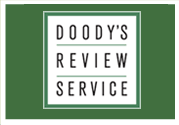The University of Central Florida College of Medicine (UCF COM) Harriet F. Ginsburg Health Sciences Library is a born-digital library established in 2009. For the purposes of this article, the phrase, “born-digital,” means a library that has been created after the establishment of the web and whose collection is primarily electronic rather than print.1 As the founding electronic resources librarian, I built the medical collection from scratch making the library’s vision of creating an information resource collection that is 100% electronic and is available anywhere, anytime, on any device, a reality.2
In this article, I share collection development lessons I have learned while building and maintaining a digital health sciences library collection.
Lesson #1 – Determine the Scope of the Library’s Collection
Before building the library’s collection, first determine the scope of the collection. The UCF COM Health Sciences Library collection is curriculum driven. Every resource, database, and package to which the library subscribes is directly tied to the College of Medicine curriculum. As a result, the library’s collection is small, but mighty.
Lesson #2 – EZproxy: Every Library Should Have One
It is the practice of the Health Sciences Library to be a good partner with the main library and to provide university site-wide access for all of its subscribed resources. However, it is important to have another option when university site-wide access is too cost prohibitive and the resource is still needed by the college. The Health Sciences Library has its own instance of EZproxy and internet protocol range maintained by the College of Medicine IT Department and the library's Electronic Resources Department. Access to a resource may be restricted to only College of Medicine students, residents, staff, and faculty, which often reduces the subscription cost.
Lesson #3 -- Cost Sharing & Consortium Buying
When possible, join consortia and create partnerships to reduce subscription costs. I have partnered with the Acquisitions & Collections Department at my university's library to cost share multiple database subscriptions of interest to both libraries. My library is also a member of the Florida Collaboration of Academic Medical Libraries and participates in the subscriptions negotiated by the group. Additionally, my library also benefits from Florida state-wide subscriptions brokered by the State University Library System and the Florida Academic Library Services Cooperative.
Lesson #4 – License Agreements
License agreements are the backbone of born-digital libraries. You have to have them and you better make sure your library and your university's best interests are represented in each agreement. First, if you do not have the authority to sign agreements, I recommend you get to know the people who do. For me, it is my college's legal department and the university's purchasing department. I am familiar with each department's guidelines and what each looks for in a license agreement. Secondly, I look for resources to help me outside my organization. I refer to the Florida Academic Library Services Cooperative/Florida Virtual Campus guidelines for reviewing and negotiating license agreements for electronic resources.3 While the guidelines are written for the higher education institutions in Florida, other libraries outside the state may find them useful. The guidelines offer sample clauses for terms found in the main body of agreements, and examples of various schedules and attachments to use for creating terms not normally included in agreements. Finally, I ask vendors to include specific terms beneficial to my library, such as a 5% cap on renewal fee increases and the option not to renew a multiyear agreement if the library's budget is cut.
Lesson #5 – Marketing the Digital Collection
A born-digital library does not have rows of shelving full of books and bound journals that users typically identify as a library. Because of this, it is important to market the library's electronic resources. My library promotes the digital collection through the library liaison program and the university's course management system. Through the library liaison program, a faculty librarian is assigned to a College of Medicine module. The librarian works closely with the module teaching faculty to make sure the textbooks, journals, and databases the students need for the module are available in the library's digital collection. Using this same information, the library creates an electronic library guide for the module and embeds a link to the guide for the module in the course management system. The usage of the module library guides is steadily increasing and has proven to be a successful way to promote the library's digital collection to the College of Medicine students and faculty.
Lesson #6 – Maintaining the Digital Collection
Born-digital libraries require maintenance. The links to the library’s electronic resources should be checked periodically to make sure the URLs are still active. It is important to be aware of publisher platform changes, as well as additions and deletions to subscribed ebook and ejournal packages. Also, license agreement term dates need to be tracked, and renewal addendums need to be sent to the legal department for review and signatures. DOCLINE holdings should be updated yearly to reflect the changes in ejournal subscriptions allowing interlibrary loan.
In conclusion, the UCF COM Health Sciences Library digital collection, created in 2009, successfully meets the information needs of the college’s students, residents, and faculty. These students, residents, and faculty, many of whom are located throughout the central Florida area, benefit greatly by being able to access the library’s collection from anywhere, anytime, on any device.
References
1. Shearer BS, Klatt C, Nagy SP. Development of a new academic digital library: a study of usage data of a core medical electronic journal collection.
J Med Libr Assoc. 2009;97(2):93-101.
2. Universiy of Central Florida College of Medicine Library. Vision and goals.
https://med.ucf.edu/library/about-us/vision-and-goals/. Accessed September 1, 2016.
3. Florida Academic Library Services Cooperative. FLVC guidelines for e-resource license agreements.
https://libraries.flvc.org/e-resources. Accessed September 1, 2016.
